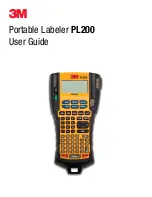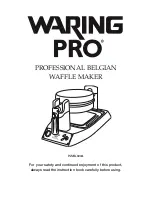
6 GB/CY
Preparing for first use
Basic recipe for an Italian
noodle dough
Ingredients
300 g
flour (preferably a hard grain wheat flour)
130 ml natural mineral water
½
teaspoon salt
1. Create a mound with the flour and the salt on
your working surface then stir well. Press out a
hollow in the middle.
2. Place the water into the hollow and mix together
with a fork. Mix the water with the flour from
the centre outwards until it reaches a uniform
consistency.
3. Knead the dough with your hands for about
10–15 minutes until it is smooth and shiny
(see Fig. B).
Carefully add some water if the dough becomes
too hard. Knead the dough some more if it is too
soft. The dough should not stick to your hands.
4. Form the dough into a ball (see Fig. C), cover
it with a clean, damp cloth and let it rest for
30 minutes.
First use
Stand the noodle machine
1
on a table.
Insert the clamp
3
into the hole and fasten
the noodle machine
1
down on to the table
(see Fig. A).
Place the roller attachment
5
along the guide
rails on the noodle machine
1
.
Insert the crank
2
into the hole on the noodle
machine
1
(see Fig. A).
Before you use the noodle machine
1
for the
first time clean it as described in the section on
“Cleaning and maintenance”. Clean all the parts
that come into contact with foodstuff with a moist
cloth to remove any dirt. Then fully dry the parts.
Turn a small amount of the dough through the
rollers to clean them. This first dough must not
be eaten.
Divide the previously prepared dough into smaller
portions. Work on one portion at a time. Cover
the rest so that it does not dry out (see Fig. D).
Pull out the roller setting wheel
4
slightly and
turn it to position 7, so that the smooth rollers have
the biggest distance to each other (see Fig. E).
Turn the crank
2
clockwise and run the dough
through the rollers. Fold the dough together again
and if necessary sprinkle some more flour on the
dough. Repeat this process about 5–6 times (see
Fig. F). The dough should have a uniform shape.
Adjust the roller setting wheel
4
to a more
narrow position and insert the dough sheet
again until you have the required thickness.
Cut the sheet of dough to the desired length
using a knife.
Insert the crank
2
into one of the holes on the
roller attachment
5
and run the dough through
it slowly (see Fig. I, J).
Then place the noodles on to a tablecloth or
over a noodle stand and leave them to dry for
at least 1 hour.
Tip:
If the rollers do not cut the dough then the dough
is too soft. In this case the dough should be mixed
with some flour and run through the smooth rollers
again (see Fig. G, H).
For better performance, fold the dough and add
some flour on the dough. Repeat this process about
5–6 times each position (see Fig. G, H).
If the dough is too dry it will not be gripped by the
rollers. In this case some water should be added to
the dough and the dough run through the smooth
rollers again.
Add the noodles to an adequate volume of
boiling salted water (approx. 4 litres per ½ kg
noodles). Fresh noodles are ready within 2–5
minutes depending on their thickness.
Stir the noodles carefully while cooking then
pour out the noodles into a sieve.







































